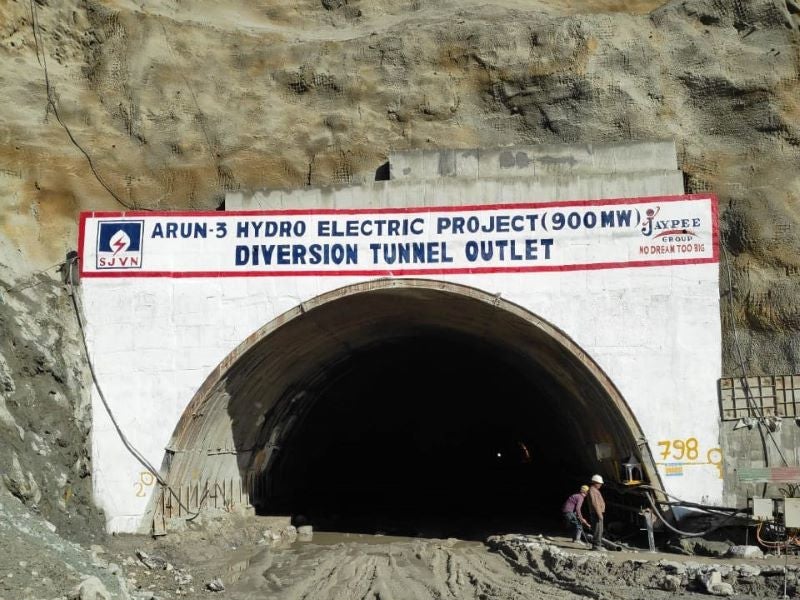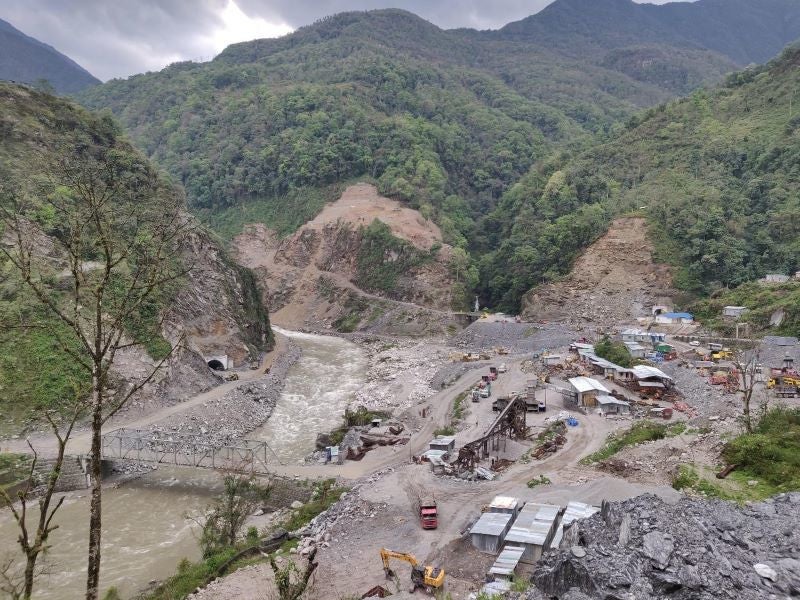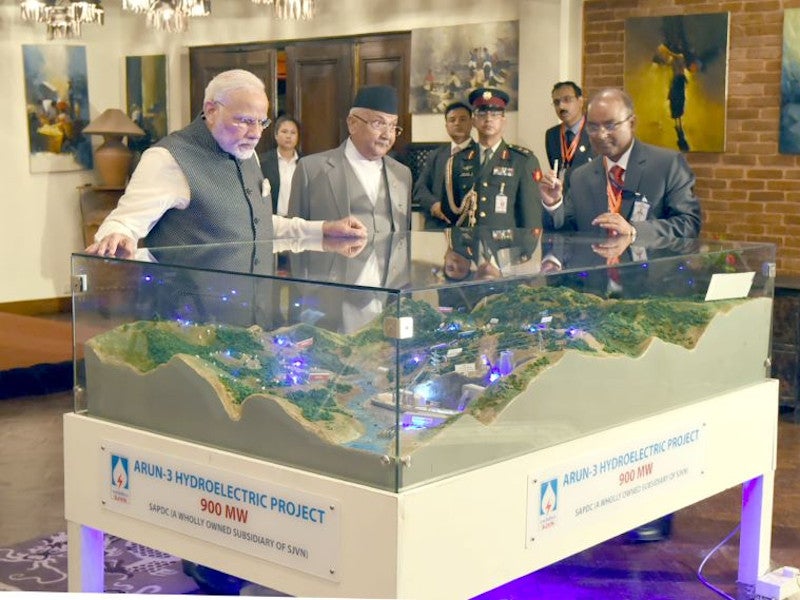The Arun-III hydroelectric power plant is a 900MW run-of-the-river hydropower project under construction in Nepal. Scheduled for commissioning by 2024, it will be the biggest hydroelectric facility in the South Asian country.
SJVN Arun-III Power Development Company (SAPDC), a wholly-owned subsidiary of India’s Satluj Jal Vidyut Nigam (SJVN), is developing the project on a build-own-operate-transfer (BOOT) basis. SVJN is a joint-venture between the Government of India and the Government of Himachal Pradesh.
SAPDC will operate the facility for a period of 25 years, excluding the construction period of five years, before transferring the ownership to the Nepal government.
Nepal will receive 21.9% of the electricity generated at the power plant as free power during these initial 25 years of commercial operations.
The project development agreement was signed by the Investment Board of the Government of Nepal and SAPDC in November 2014. The financial closure for the project, which is estimated to cost approximately £755m ($983m), was reached in February 2020.
The foundation stone for the Arun-III hydroelectric power project was laid in May 2018.
Location
The Arun-III hydroelectric facility is being built on the Arun River in Sankhuwasabha district, Nepal. Arun is a tributary of the Koshi River in Nepal. The project site is located approximately 657km east of Kathmandu, the capital of Nepal.
Arun-III hydroelectric facility make-up
The Arun-3 run-of-the-river hydropower project comprises a 466m-long and 70m-high concrete gravity dam with four underground desilting chambers, a headrace tunnel, a surge shaft, an underground powerhouse equipped with four 225MW Francis turbine-generator units, and a tailrace tunnel.
The 466m-long, 11m-diameter diversion tunnel for the project will have a discharge capacity of 1,300m3/s, while the storage capacity of the dam will be approximately 13.94m3.
The design discharge capacity of the 11.74km-long, 9.5m-diameter circular headrace tunnel will be 344.68 m3/s. The headrace tunnel will be connected to the powerhouse through two steel-lined pressure shafts and four penstocks.
The powerhouse complex will be situated on the left bank. Each of the four vertical Francis turbines housed within the underground cavern will be paired with a 250MVA generator.
The transformer cavern will house 13 single-phase transformers, including one spare transformer, of 92MVA capacity each.
Power transmission
The electricity generated by the Arun-3 hydroelectric power station will be transmitted to Muzaffarpur in India through a 317km-long 400kV double circuit transmission line. SAPDC will construct the Nepal section of the transmission line that will stretch for approximately 217km from the Arun-3 facility to Bathnaha at the Indo-Nepal border.
Project finance
A group of seven banks from India and Nepal agreed to provide debt facilities worth approximately £684 ($890m) for the project in February 2020.
Nepal-based banks Everest Bank and Nabil Bank will provide loans of approximately £104m ($135m), while Indian lenders including State Bank of India, Punjab National Bank, Canara Bank, Union Bank of India and Export-Import Bank of India have agreed to provide £580m ($755m).
Separately, the Government of India also approved an investment of approximately £150m ($192m) for the construction of the 400kV double circuit transmission line from Arun-3 to the India-Nepal border in February 2019.
Contracts awarded
The civil works for the project are divided into two lots. Jaiprakash Associates was awarded the Lot-1 civil works contract £128m ($172.6m) for the project in September 2017. The work scope includes the construction of the diversion tunnel, dam, intake tunnels, a part of the headrace tunnel, and the diversion tunnel gates.
Patel Engineering bagged the contract for Lot-2 civil works worth approximately £126.5m ($164m) in August 2018. The scope of work includes the construction of a part of the headrace tunnel, underground powerhouse, as well as pressure and surge shafts.
BHEL was awarded a contract worth approximately £58.5m ($80.5m) to design, engineer, manufacture, supply, erect and commission four vertical Francis turbines and generator sets at the power plant in May 2018.
Om Metals Infraprojects secured a £17m ($24m) contract to execute the hydro-mechanical works for the project in April 2018.
Power Grid Corporation of India (PGCIL) provides project management consultancy services for the Nepal section of the project’s transmission line.





